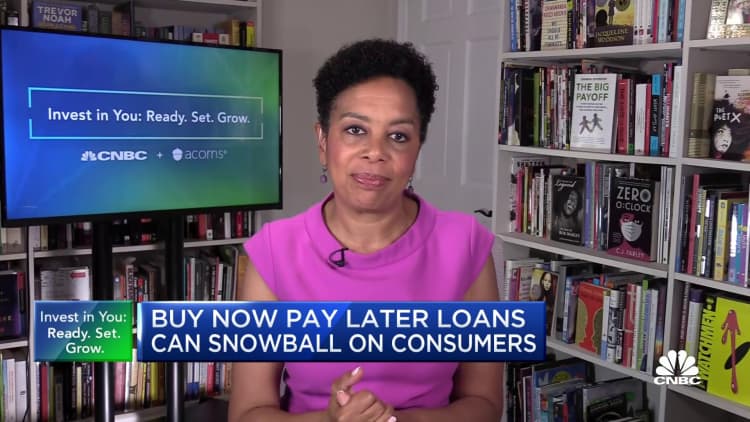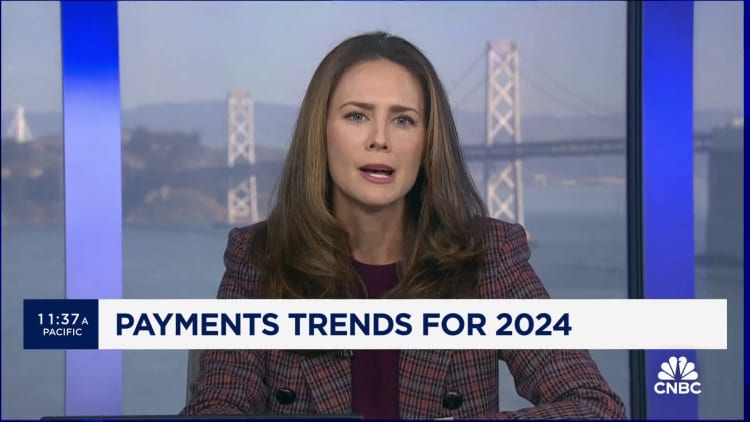Some types of debt can haunt you.
“Buy now, pay later” loans, especially, can be hard to track, making it easier for more consumers to get in over their heads, some experts say — even more than credit cards, which are simpler to account for, despite sky-high interest rates.
Over the holidays, the use of installment payments hit an all-time high, up 14% year over year, according to Adobe’s latest online shopping data.
Buy now, pay later is now one of the fastest-growing categories in consumer finance, according to a separate report by Wells Fargo.
‘Phantom debt’ may mean people are more in the red
“Because no central repository exists for monitoring it, growth of this ‘phantom debt’ could imply total household debt levels are actually higher than traditional measures,” said Tim Quinlan, senior economist at Wells Fargo and co-author of the report.
Since buy now, pay later loans are not currently reported to major credit reporting agencies, that makes it a challenge for a lender to know how many loans a consumer has outstanding, Quinlan said.
“It’s hard to know how much of this debt is out there,” said Ted Rossman, senior industry analyst at Bankrate. “It’s this kind of shadow debt that’s hanging over people.”
More from Personal Finance:
Americans are ‘doom spending’
The first step to setting an annual budget
This strategy can help you meet New Year’s resolution goals
There’s a reason that buy now, pay later companies, such as Affirm, Afterpay and Klarna, are so popular among shoppers.
“With credit card interest rates north of 20%, a BNPL [buy now, pay later loan] affords consumers access to capital without increased costs,” Quinlan said.
“What we have is a business model that is perfect for uncertain times,” Affirm co-founder and CEO Max Levchin said recently on CNBC’s “Squawk on the Street.”
However, managing multiple buy now, pay later loans with different payment dates can also be a challenge, Quinlan added.
“BNPL could lead to an increase in consumer debt, as consumers may be more likely to take on additional debt if they know they can spread out the payments,” he said. “You can bury yourself in low monthly payments.”

While the typical terms might break a purchase into four equal interest-free payments, not all buy now, pay later loans work that way.
“A lot of these plans are stretching on longer and even charging interest; I find that very ironic,” Rossman said. “It’s feeling more and more credit-card like — that can get people into trouble.”
In addition, if a consumer misses a payment, there could be late fees, deferred interest or other penalties, depending on the lender.
Separate studies have also shown that installment buying could encourage consumers to spend more than they can afford on impulse purchases.
“This can lead to debt problems,” Quinlan said.
Buy now, pay later operates in ‘de facto stealth mode’
Buy now, pay later products are not regulated in the same way as credit cards, which means there may be fewer protections in place for consumers, Quinlan said.
“More worryingly, BNPL does this in de facto stealth mode because it largely flies beneath the radar of both regulators and policymakers,” Quinlan said.
Meanwhile, the Consumer Financial Protection Bureau has opened an inquiry into buy now, pay later lenders.
The CFPB said it is particularly concerned about the lack of clear disclosures of loan terms as well as how these programs affect consumer debt accumulation, what consumer protection laws apply and how the payment providers harvest data.
“Until there is a definitive measure for it, there is no way to know when this phantom debt could create problems for the consumer and the broader economy,” Quinlan said.
Subscribe to CNBC on YouTube.
Credit: Source link




